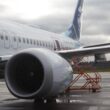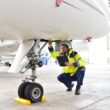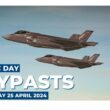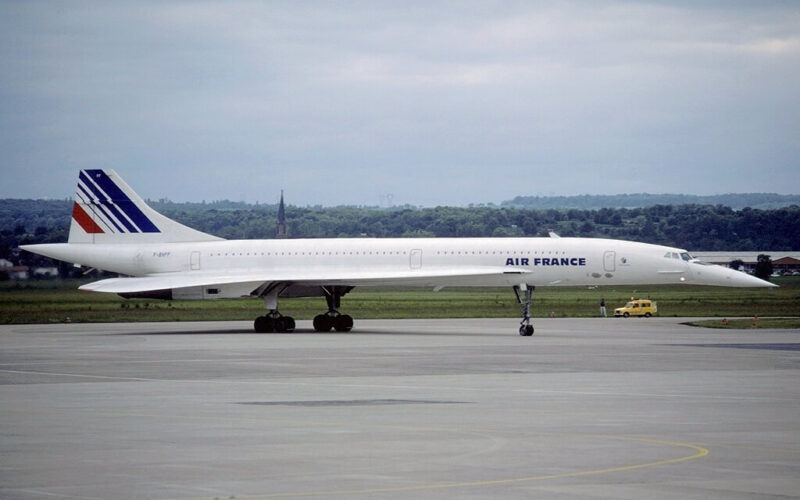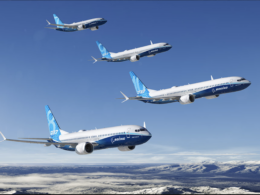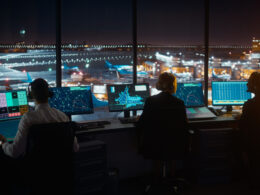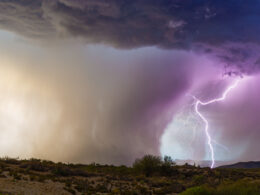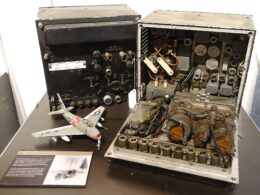Throughout history, air travel was associated with luxury and exclusivity. High ticket prices filtered out the passengers, making aviation an extravagant way to travel for the top 1% of the people.
If you were to google the phrase “Golden age of aviation”, you would be surprised – as if passengers traveled on 3-star Michelin restaurants in the sky, rather than plain metal tubes we are used to see today.
But even so, one aircraft became synonymous with luxury travel when it first made its debut commercial flight in 1976.
Concorde.
With ticket prices as high as $9,000 for a round-trip above the Atlantic, only a very limited number of people could even come close to being able to afford a journey on the Concorde.
The eleganza extravaganza ended in 2003 when both British Airways and Air France scheduled the last flights for the supersonic jet.
And it all started with Air France Flight 4590 in 2000.
The official report by BEA, released on January 2002, determined that a metal strip from Continental Airlines DC-10 destroyed one of the jet’s tires. As a result, the debris from the tire punctured a fuel tank, causing a huge flame to erupt under the wing of Concorde.
The public settled on the fact that the metal strip was to be blamed for the accident. Furthermore, a French court in 2010 charged Continental Airlines and John Taylor, a mechanic who worked for the airline, with involuntary manslaughter.
The charge was overturned in 2012, clearing both the now-defunct airline and the mechanic of any charges.
So, if the court deemed Continental Airlines not responsible for the accident, what could have caused the crash?
A brewing disaster
Concorde was a true technological marvel; there are no doubts about it. However, the supersonic jet had its fair share of issues, especially with tires. The New York Times wrote an article in November 1981, reporting NTSB’s “serious concern” about the safety of the Concorde’s tires. Four separate incidents involving different Air France Concorde frames were recorded between 1979 and 1981. In addition, a British Airways Concorde also suffered a tire blowout on August 9, 1981, during take-off from New York JFK airport.
The same article highlights the first tire blowout in Washington Dulles International Airport (IAD) in June 1979, which the NTSB described as following:
“Tire debris and wheel shrapnel resulted in damage to the No. 2 engine, puncture of three fuel tanks, and severance of several hydraulic lines and electrical wires. Additionally, a large hole was torn in the top wing skin”.
The BEA, the French agency that investigates aviation accidents and incidents, has laid out these recommendations in June 1980, following the 1979 Washington Dulles (IAD) incident:
· A device within the cockpit that informs the pilots about a deflated tire;
· Improve the durability of the tires during takeoff and landing;
· Improve the durability of the wheel after an event when the tire deflates;
· Upgrade the FDR so that it would show the condition of the hydraulic system;
· Force pilots to wear headsets, with two different recordings that would show up on the FDR.
The NTSB also raised concerns regarding continuous tire issues in 1981. In the safety recommendation, the board noted that even after Air France had issued a Technical Information Update to pilots to inspect the tires before takeoff and not to raise the landing gear after a tire problem is heard, the NTSB had to repeat the same instructions once again.
British Airways Concorde tire blowouts
British Airways had its own fair share of cases of Concorde tire explosions. However, unlike Air France, the British airline made significant changes to the design of Concorde wheels.
In 1993, in a span of five months, the Air Accidents Investigation Branch concluded two reports on two separate Concorde incidents that resulted in damage to fuel tanks.
The first incident occurred in July 1993 at London Heathrow Airport (LHR), when a British Airways Concorde, registered as G-BOAF, landed from New York (JFK). After landing smoothly and applying reverse thrust, the pilot applied wheel brakes. The flight crew instantly felt a bang and a warning light lit up in the cockpit, warning the crew about issues with the wheel brake system. After coming to a stop by using reverse thrust, the aircraft safely returned to the gate.
Nevertheless, investigators discovered that in addition to the damage to the No. 3 engine, the debris also punctured the No. 8 fuel tank. Luckily, it was empty, thus a potentially fatal disaster was avoided.
Under very similar circumstances, the second incident happened in October 1993. Unlike the previously mentioned fuel tank puncture, this time the supersonic jet was taxiing to the runway when the captain of the Concorde applied the brakes. Firstly, the aircraft moved in an unusual way. As the captain re-applied the brakes, the flight crew heard a loud bang.
Subsequently, the captain applied the emergency brakes and the Concorde came to a halt. As the flight systems showcased multiple warning lights, including issues with tires and wheel brakes, the PIC opened his window and conducted a visual inspection of the aircraft. He noticed that fuel leaking from the left side of the aircraft.
The pilots shut off the No. 1 and No. 2 engines. Later inspections revealed that 50% of a water deflector from the No. 2 tire was missing, which punctured the No.1 fuel tank, located on the left side of the aircraft.
Changes to the design and Air France negligence
Following the events in 1993, British Airways ordered a change to the wheel structure. To stop a water deflector from puncturing a tank in an event of a tire blowout, new water deflectors would be held by a cable attached to the body of Concorde.
While British Airways did implement this change in 1995, Air France did not. Separate articles, released by CNN and The Independent on August 3, 2000, and August 4, 2000, respectively, report this.
At that time, the airline stated that “under French civil aviation rules it had not been obliged to introduce the modification, which it said would not stop the deflectors coming away from the undercarriage”.
However, a British Airways spokeswoman told The Independent that “the cable holds the deflector together”.
But the two dailies published their articles a week after Air France Flight 4590 took off with flames emitting from its engines.
So, what happened on July 25, 2000, at Paris Charles De Gaulle Airport (CDG)?
Air France Flight 4590 crashes
The flight started out as normal, according to the BEA report. 30 minutes before the flight was supposed to take off, the flight crew came in contact with the control tower to request for the whole of Runway 26R for a scheduled take off at 14:30.
At 14:07, ATC gave the green light for the supersonic airliner to begin take-off procedures, including taxiing to the holding point. ATC cleared the Concorde to line up at 14:40 and cleared the flight to take off at 14:42. Shortly after, the captain of the flight began taking off and called V1. A few seconds later, the Concorde ran over a titanium metal strip, which destroyed the No. 2 tire and, subsequently, the debris of the tire punctured the No 5. fuel tank. The fuel ignited instantly and engines No. 1 and No. 2 lost thrust.
As the captain commenced rotation of the aircraft to lift off the ground, ATC contacted the crew and confirmed a huge flame at the back of the aircraft.
The first officer informed the ATC that they would attempt to land at Le Bourget (LBG). However, the aircraft never reached Le Bourget and at 14:44 crashed into a hotel in Gonesse, claiming the lives of 109 people on board and 4 people that were present at Hotel Relais Bleus.
In just a matter of 2 minutes, the course of aviation history changed forever. While the Concorde flew again a year later, both Air France and British Airways sealed the story of supersonic travel in 2003, when the last Concorde flight landed in London Heathrow Airport on October 24, 2003.
But why did the Concorde crash, if several almost identical incidents happened in the 80s and 90s, without claiming a single life?
Circumstances and fundamental design problems
While the Concorde was one of the greatest engineering feats ever to be achieved by aviation engineers, in order to fly at the speeds the aircraft flew at, several compromises had to be made.
The aircraft was very efficient at supersonic speeds but had a lot of issues when traveling above land and during airport procedures. The Rolls-Royce Olympus turbojets engines were very thirsty for gas, especially at subsonic speeds – the Concorde was able to hold 119 280 liters of fuel, which equals to 94 470 kilograms (208270 lbs).
If needed, the Concorde could hold an extra 1 630 liters of fuel, achieved by an overfill procedure while the aircraft was on the ground.
All in all, the Concorde was certified to carry a maximum takeoff weight of 185 070 kilograms (408009 lbs).
As mentioned above, the supersonic airliner was plagued by continuous tires issues due to its design. Throughout the history of Concorde, there were more than 50 events of the jet suffering tire blowouts or wheel damage.
So, this was the first link in the chain of events that led to the disaster of Flight 4590.
Secondly, the tire that suffered a blowout was the No. 2 tire on the left landing gear. According to the BEA report, the tire was the second most-worn tire on the Concorde – it went through 37 flight cycles.
With this in mind, the accident report also highlights the fact that the Concorde carried more weight than it was supposed to. BEA notes that “aircraft’s takeoff weight in fact exceeded the maximum weight by about one ton”. However, the agency also says that “any effect on takeoff performance from this excess weight was negligible”.
Nevertheless, extra weight on a pretty worn-out tire that will run over a titanium metal strip on the runway might have contributed to the chain of events.
A few seconds after the captain announced V1, which is the speed at which the captain should not attempt to abort take-off procedures, the No. 2 tire overran the titanium metal strip, which fell out of the Continental Airlines DC-10.
While the Air France and NTSB issued instructions in 1980 and 1981 for pilots to not raise landing gear during a wheel or tire failure, the fact that the crew was unable to raise the landing gear contributed to the accident. The pilots were unable to properly gain altitude due to the landing gear staying down and constant airflow kept the fire alive, as outlined in the BEA report.
Aftermath
After the July 25 events, aviation authorities suspended the type certificate of Concorde, until operators could guarantee the safety of the supersonic jet. The BEA report also highlighted the must-have changes to Concorde:
· Kevlar lining to bolster the main fuel tanks, thus reducing the flow of fuel after a leak and subsequently, reducing the chances of sustained fire;
· Newly developed Michelin NZG tires, which are more resistant to foreign object damage;
· Reinforcement of the electrical wiring in the main landing gear bays;
· Changes to the water deflectors, antiskid protocols, flat tire detection systems and brake cooling were also issued.
When Concorde returned to commercial passenger service on November 7, 2001, both airlines realized that the end of supersonic travel was near. Low passenger numbers following the Air France crash, a general slump in the industry after the attacks on September 11, 2001, and Airbus’ refusal to provide maintenance for Concorde all contributed to the last pages of Concorde’s history.

